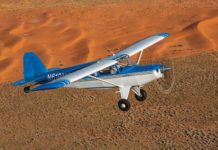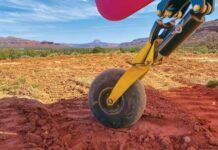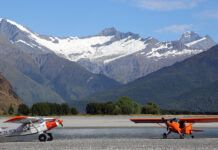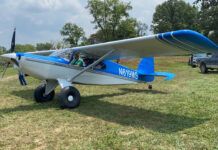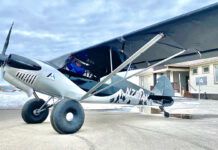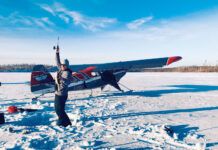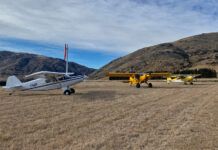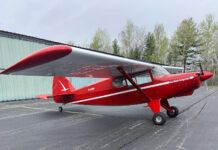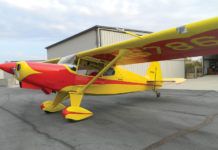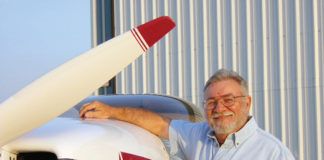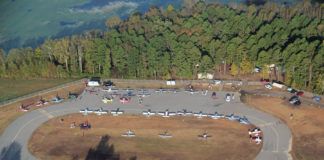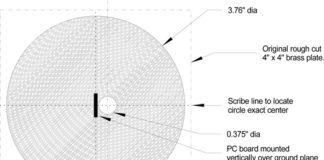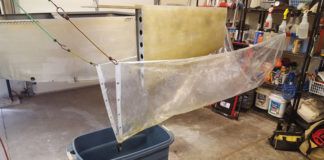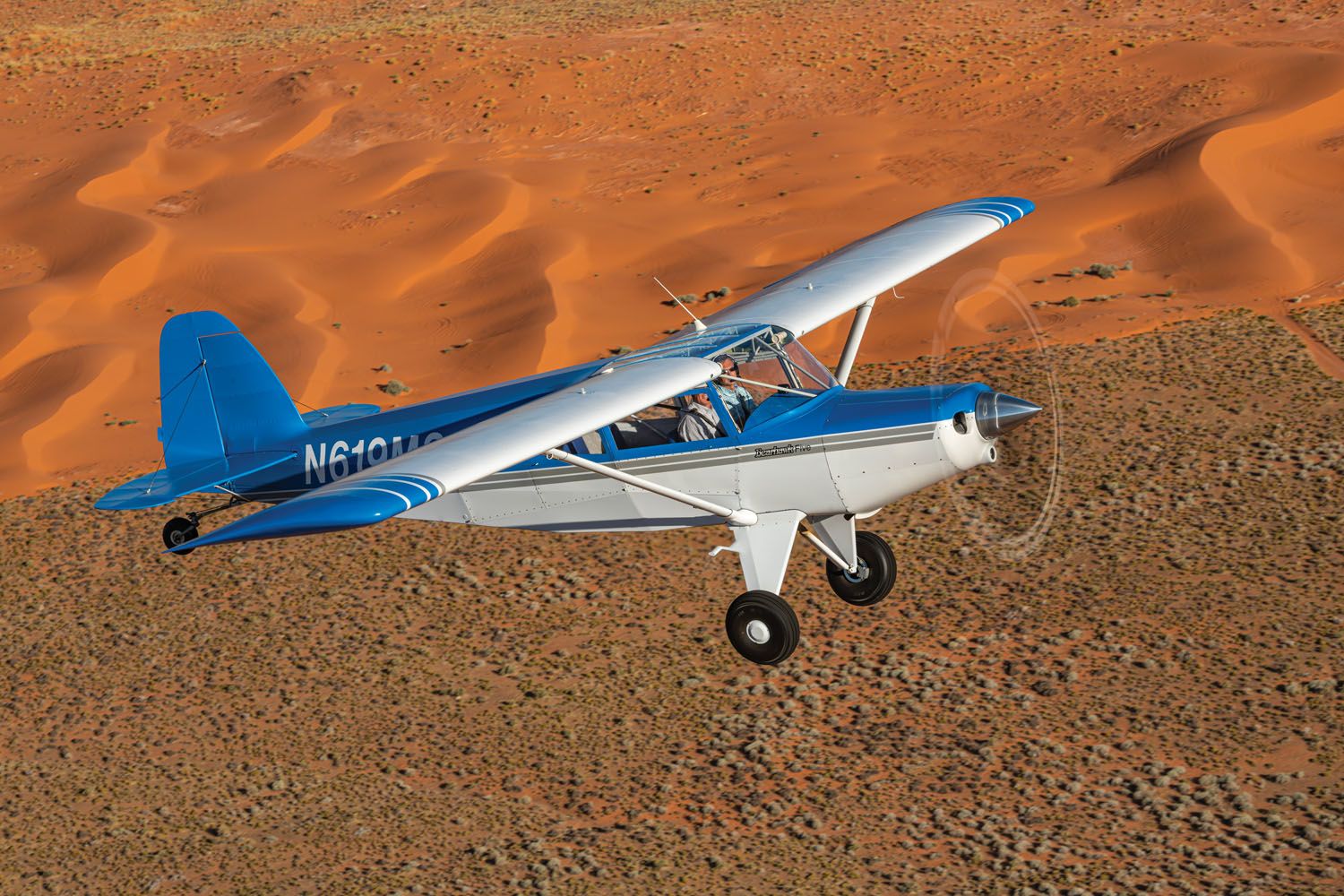 If you look at the total number of homebuilt aircraft designs listed in the KITPLANES® online directory, you’ll find a distinct—some might say overwhelming—preference for two-seat machines. Yes, there are a fair number of single-seaters, but most of those designs date back a fair number of years, and one-holers are a bit of a niche market today. On the other side of the “double-seaters,” there are a few oddball three-person designs and a number that are referred to as “2+2” airplanes—with it understood that the second “2” had better be small people. You’ll find a much smaller number of true four-seat airplanes, and this is often attributed to the fact that building a four-seater is a much larger (and more expensive) task than simply doubling the size of a plane that will carry a pilot and a friend. Not to say there aren’t a lot of RV-10s out there—but the number of different four-seat options are lower than in the certified world.
If you look at the total number of homebuilt aircraft designs listed in the KITPLANES® online directory, you’ll find a distinct—some might say overwhelming—preference for two-seat machines. Yes, there are a fair number of single-seaters, but most of those designs date back a fair number of years, and one-holers are a bit of a niche market today. On the other side of the “double-seaters,” there are a few oddball three-person designs and a number that are referred to as “2+2” airplanes—with it understood that the second “2” had better be small people. You’ll find a much smaller number of true four-seat airplanes, and this is often attributed to the fact that building a four-seater is a much larger (and more expensive) task than simply doubling the size of a plane that will carry a pilot and a friend. Not to say there aren’t a lot of RV-10s out there—but the number of different four-seat options are lower than in the certified world.
Once you go beyond four seats, the numbers really thin out. In fact, you can probably count the number of practical homebuilts with more than four seats on the fingers of your hands—and maybe just one hand. So when a new aircraft hits the market claiming seating for six, we all sit up and take notice! For many, it’s not the need to put six actual people in an airplane; it is the load-carrying capability that such size implies that is attractive, and the new Bearhawk 5 surely does more than imply it—it provides it.
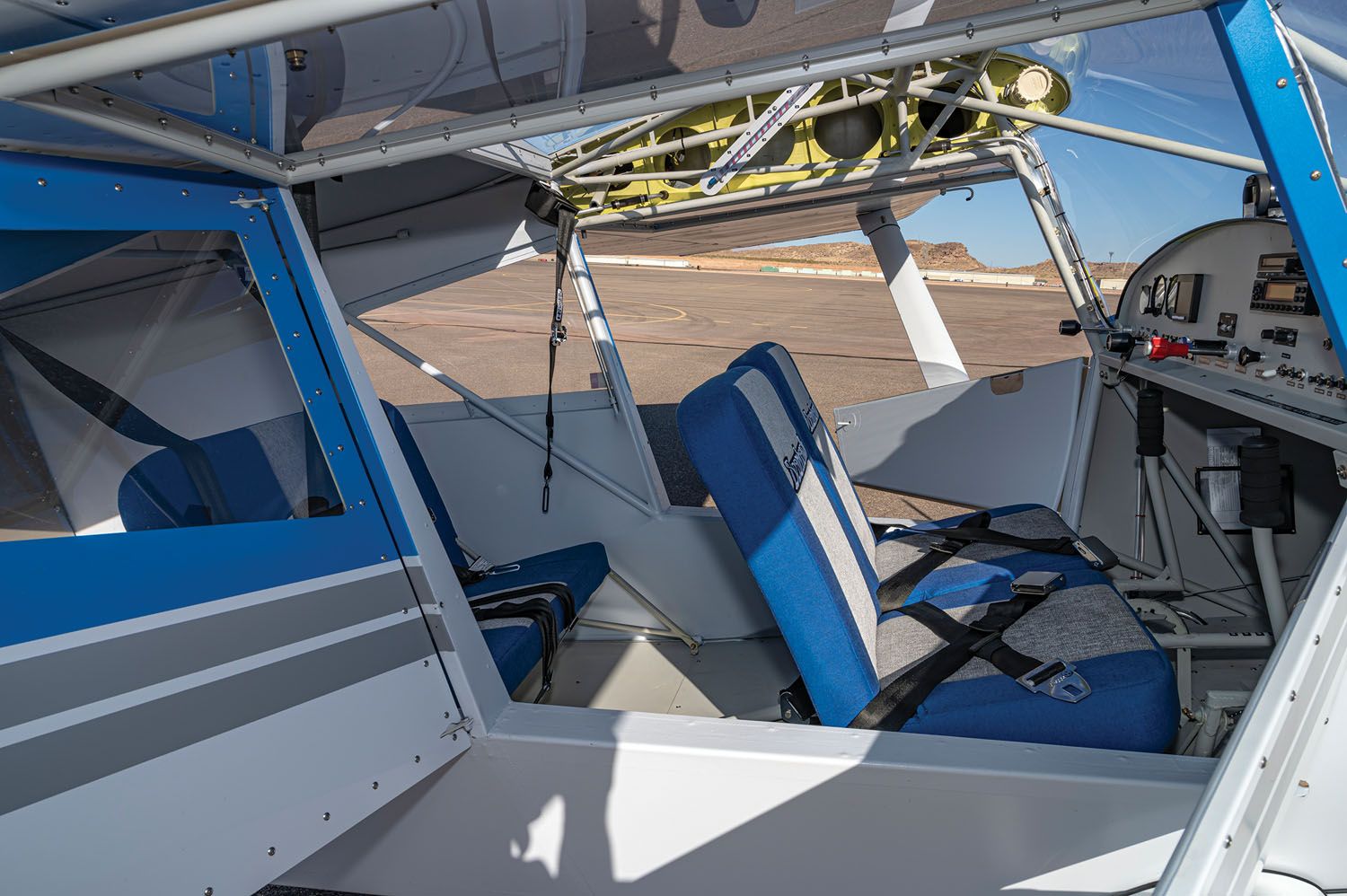
Combining the New and the Old
The Bearhawk 5 is indeed a growth version of the previous models to come out of Bob Barrow’s creative mind. Two years in development, the airplane was started by a friend of Barrows who wanted something even larger than the Bearhawk 4-Place, an already roomy and capable aircraft. Barrows did the design work, and the builder began work but stopped when health issues got in the way. The project was picked up by many-time builder Colin Campbell, who finished it in excellent style and with outstanding workmanship. We looked all over the prototype for signs that it was indeed a prototype and didn’t find anything that wouldn’t stand up to the scrutiny of the most finicky EAA judge. It’s well designed, well built and nicely finished.
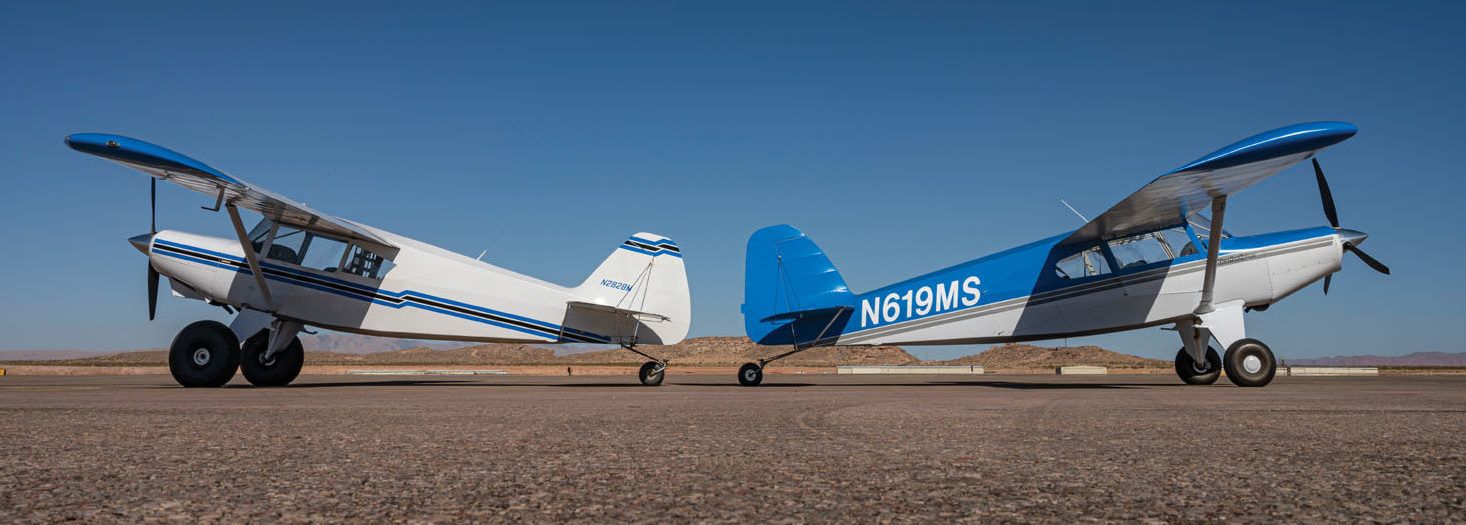
The airplane uses the same wings as the Bearhawk 4-Place, but the fuselage is two inches wider and the cabin is 14 inches longer. The length allows the claim of six seats, although the prototype has only four installed—plus a huge area for baggage. As for the additional two inches in width—it is noticeable and feels spacious with two aboard.
The engine is an IO-580, an angle-valve version of the parallel-valve 540 that specs out with 315 horsepower. That’s a lot of ponies under the hood and, of course, if you use them all, you’ll be burning more fuel than you will with the 300-hp IO-540. But the trick with big engines is that you can use them at full song when you need all the power and then throttle back to burn less fuel when you aren’t trying to lift a moose out of a short mountain strip. Of course, we all know that you can throttle back big engines to save fuel, but no one I know actually does—we just enjoy power that much!
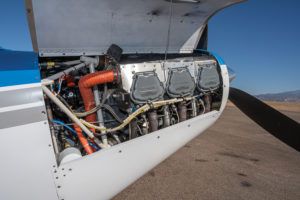
The airplane was designed to run about 160 mph (139 knots) TAS, and when we set it up for cruise, we were indicating 124 knots (144 mph) at 5500 feet with an OAT of 73° F—which calculates out to 149 knots (161 mph) true—so we are happy that it meets book speed. That was running 24×2400, a comfortable place for the engine. You can get more out of it, but the fuel flow will undoubtedly begin to bother you.
In terms of weight carrying, the airplane was designed for a gross weight of 3000 pounds, and the prototype came in empty at just a shade over 1500 (1512 pounds to be exact). So basically, it can lift its own empty weight in useful load, a fair feat for any homebuilt. And as we mentioned, the three-blade Hartzell Trailblazer prop does an excellent job of translating horsepower into thrust, so getting all that weight off the ground is no problem.
The Bearhawk lineup is pretty broad: From LSA to two-seat Cubbish, to four-seat workhorse. Now add the Bearhawk 5 that can carry even more, and it’s hard to figure out where Bearhawk will go next. We’re pretty sure Barrows isn’t finished. But if high-wing utility is your game, there is already a wide selection from the company to choose from.
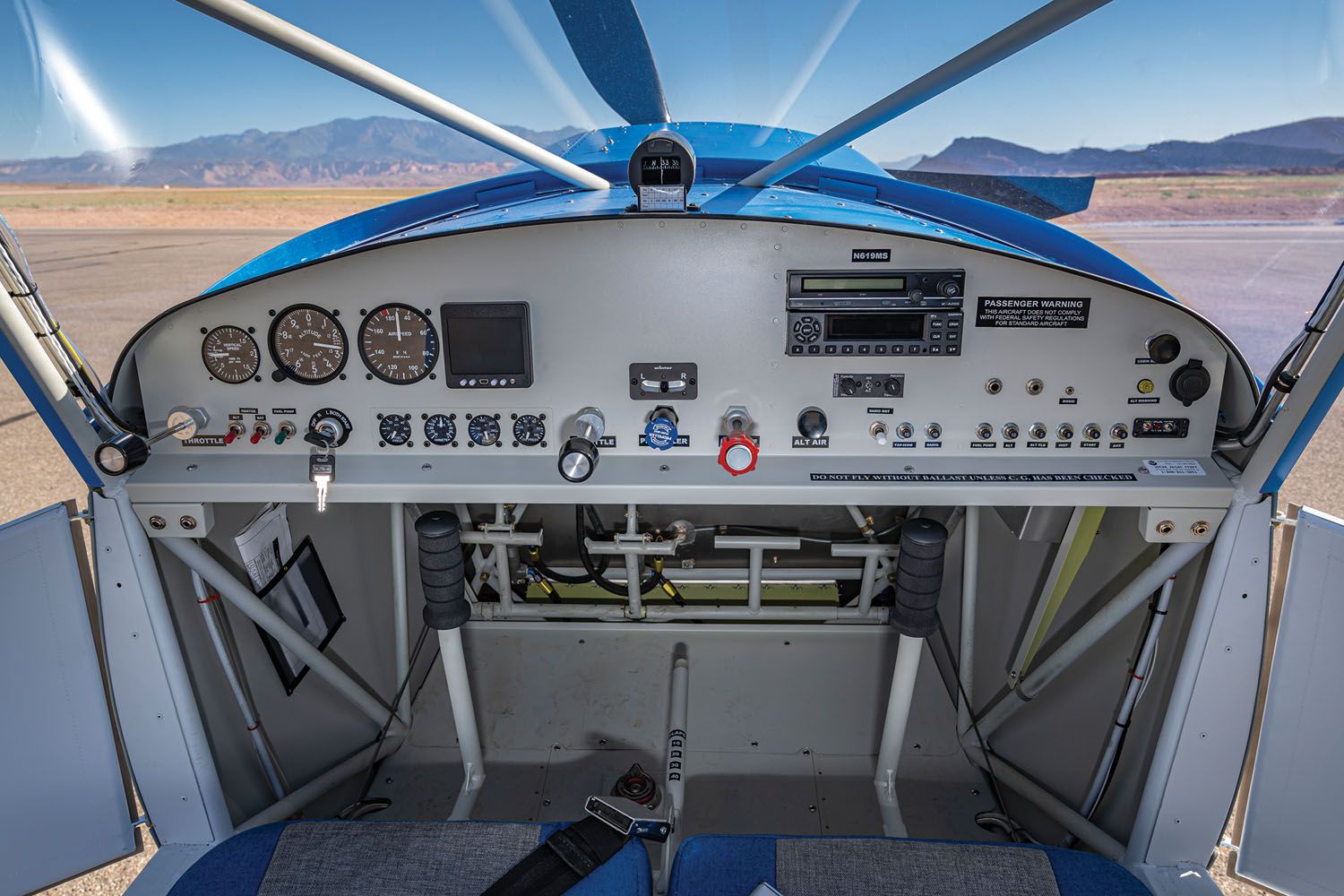
In the Cockpit
The prototype Bearhawk 5 is sparsely equipped as befits an airplane that is built for utility, not glitz. The panel has an airspeed indicator, an altimeter and a VSI for flight instruments. There’s also a compact engine monitor and an avionics suite with nothing more than a com radio and transponder (ADS-B capable). For navigating, the pilot has to use a portable GPS, iPad with navigation app—or the good old-fashioned “looking out the window and comparing it with a map” method—which actually works just fine. This is not an EFIS-equipped, autopilot-driven airplane. It is a load and people hauler designed to go places others can’t.
Entry is through either side door for the front or through a huge baggage/rear door combination in the back. The front seats are adjustable to accommodate different leg lengths and to facilitate getting in and out. Ingress and egress are easiest with the seats slid back, but you’d have to be an NBA player to work the rudder pedals from the slid-back location.

The legroom for the passenger seats is extraordinary, and there is room left in the baggage area for two more seats if needed.
The front doors are actually fairly narrow top to bottom, but that lack of height is accentuated by how big they are front to back; in other words, it’s pretty easy to get in. The side windows swing up under the wing, enclosing the cockpit when it’s cold but opening things up marvelously when you want to experience the sky up close and personal. Visibility and general cockpit airiness is enhanced by the full-size overhead window, which provides great visibility into a steep turn.
Controls are conventional and fell comfortably to hand as soon as we settled in. There are sight fuel gauges in the wing roots, making it easy to tell how much of the 55-gallon capacity is 100LL and how much is air. Overall, the cockpit is exactly what we want in a utility machine—utilitarian, neat, not filled with things you are worried about breaking. Although I wouldn’t recommend taking a garden hose to it to clean it out, you get the feeling that it might not damage anything. It’s like a big Jeep for the sky.
Flying the Big Bearhawk
The fuel injected IO-580 started easily after a night spent in the desert air. It fired right up after two blades had swept past, with an EarthX battery spinning the starter and Slick mags and a SlickSTART magneto booster providing the quick spark. The three-blade Hartzell composite prop looks all business and provides plenty of pull to get going.
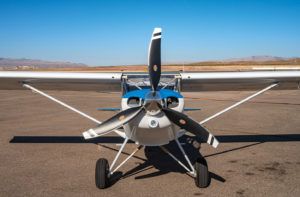
Our opportunity to fly the Bearhawk 5 came in St. George, Utah, where we arranged for a joint evaluation flight and photo mission. Because the prototype has brakes only on the left side, we elected to fly from the right so that demo pilot Rollie VanDorn could exercise his experience on landing if we needed it. The airplane is usually very well mannered as a taildragger, VanDorn explained, but because we were lightly loaded, the long-stroke landing gear was keeping the main gear narrow, which makes it just a little squirrelly in crosswinds. We never like to take chances when evaluating a new plane, so prudence dictated that the guy with the most experience in type would have the brakes.
The right seat still gave us full flight controls, which was more than enough to get a feel for the airplane—something that would be very important as we joined up with the photo plane as soon as we broke ground on the takeoff roll. Our photo plane came down final approach and called the start of our takeoff roll. VanDorn added power and we were off the ground in a matter of no time—as soon as the tail came up, we were flying. As soon as we saw the photo plane pop into view at our two o’clock, about 50 feet above us, Rollie signaled that it was my plane and I slid into position as we climbed out toward our target area for pictures. The transition into the new airplane was instantaneous: It flew well, responded crisply and had plenty of power to put it wherever I needed it.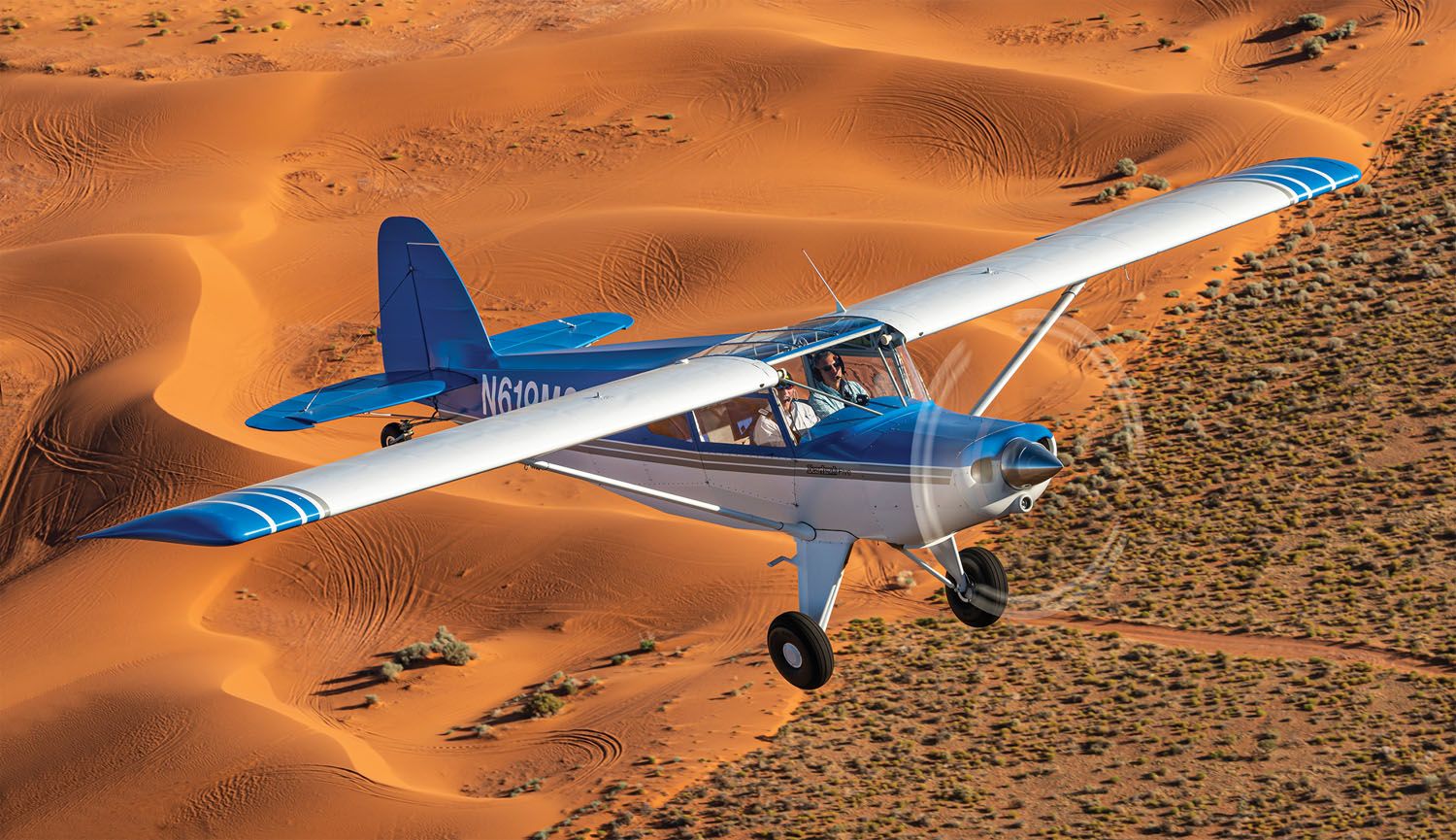
You’re obviously not going to mistake the Bearhawk 5 for a single-seat acrobatic machine, but both roll and pitch forces were surprisingly light for an airplane of this size. Rudder was appropriate and positive, and all three axes were harmonious enough to easily fly the airplane in formation with no prior practice. Of course, when working in formation, nothing is better than an excess of power for rapid acceleration when you need to pull forward (coupled to a constant-speed prop that slows you down quickly when you need to back up in a hurry), and the Bearhawk 5 has plenty of extra power. The three-blade Hartzell does a great job of turning that power into both acceleration and deceleration, so the package works pretty well.
Let’s remember, however, that most pilots will not build or buy this airplane for formation flying. So how does it handle for things you will really want to do? The answer is that anything that can be placed precisely is going to be excellent in backcountry flying. We shot only one landing (admittedly to the very wide and long piece of pavement at St. George) but found that speed control was stable, and it was very simple to pick the landing spot and put the airplane exactly where we wanted it.
After the photo mission was finished, we found our way back to the airport but did a few maneuvers along the way to sample the handling a little bit more. Steep turns were straightforward, and they showed off the visibility through the all-glass roof of the cabin. If you’re sitting in the left seat, right turns will be your favorite. If you’re in the right, you’ll like going left. We also did a quick chandelle to see how the coordination was through a changing speed regime and found that the ball stayed centered with little effort on my part. In general, it doesn’t just “fly like an airplane”—it flies like a well-behaved airplane.
We couldn’t resist slowing down and dropping the flaps, just to see how it would handle in a short-field/slow-flight scenario, and that answer is—it does just fine. With full flaps out, we had a considerable amount of power in to arrest the sink, and taking that out gave us an easy stall break, positive, but straight ahead. A lot of high-lift airplanes today sort of mush along in a semi-stalled condition, lulling the pilot into thinking all is fine, while in fact they are sinking toward the ground at an alarming rate. The break in the Bearhawk 5 gives you a good warning that yes indeed, it is time to relax the back pressure. Add a little power, relax the pull and fly right out of it.
The flaps on the Bearhawk 5 aren’t just large; they are huge! With four detents on the way from 0 to 40°, it was easy to configure the airplane for high lift or high drag—or something in between. The first two notches added considerably to lift, and the last two pretty much just added to the possible descent rate. Like most big-winged bush planes we have flown, that last notch has to be used with care because it is going to give you a heck of a descent rate. You need to reserve some energy to flare, or that long-stroke main gear is going to get a pretty good test at touchdown.
We mentioned that the visibility into turns is very good (if the turn is steep), and in general the visibility is fine in all directions—except, of course, straight ahead. If you’ve gotten used to modern taildragger designs that allow a fairly reasonable peek at what’s ahead, you’re going to be surprised by the long nose on the Bearhawk 5. That big engine does come at a price, and we found ourselves returning to the habit of constant S-turns while taxiing, something we usually reserve for older designs or those you fly from the back seat. It’s a taildragger thing, of course—one that comes back naturally to anyone that soloed in a J-3 Cub.
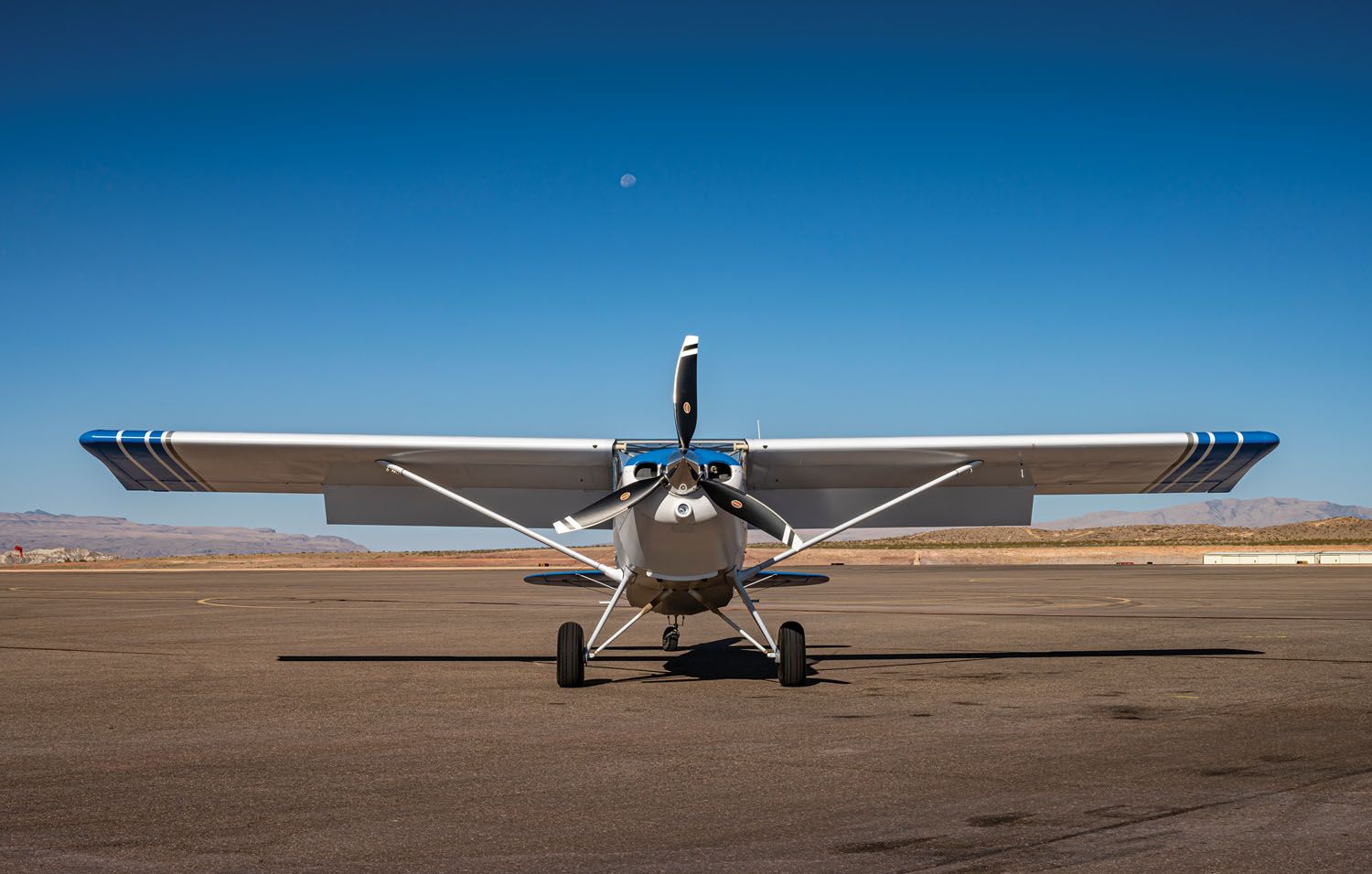
Although we didn’t have a chance to take the Bearhawk 5 to any backcountry strips, it was pretty clear from our operations off the paved surface that you can probably get it in and out of any place you would reasonably dare to go. Both takeoff and landing rolls were as short as we see in most dedicated bush planes, and the extra horsepower will help you climb over just about anything you are likely to find. Will you win the Alaskan STOL or STOL drags with it? Probably not—but you’re not going to carry four people and camping/hunting gear in any of the planes that will. I like to separate airplanes into “STOL” and “practical STOL,” and those in the second category will do fine unless you’re conducting some sort of special operations.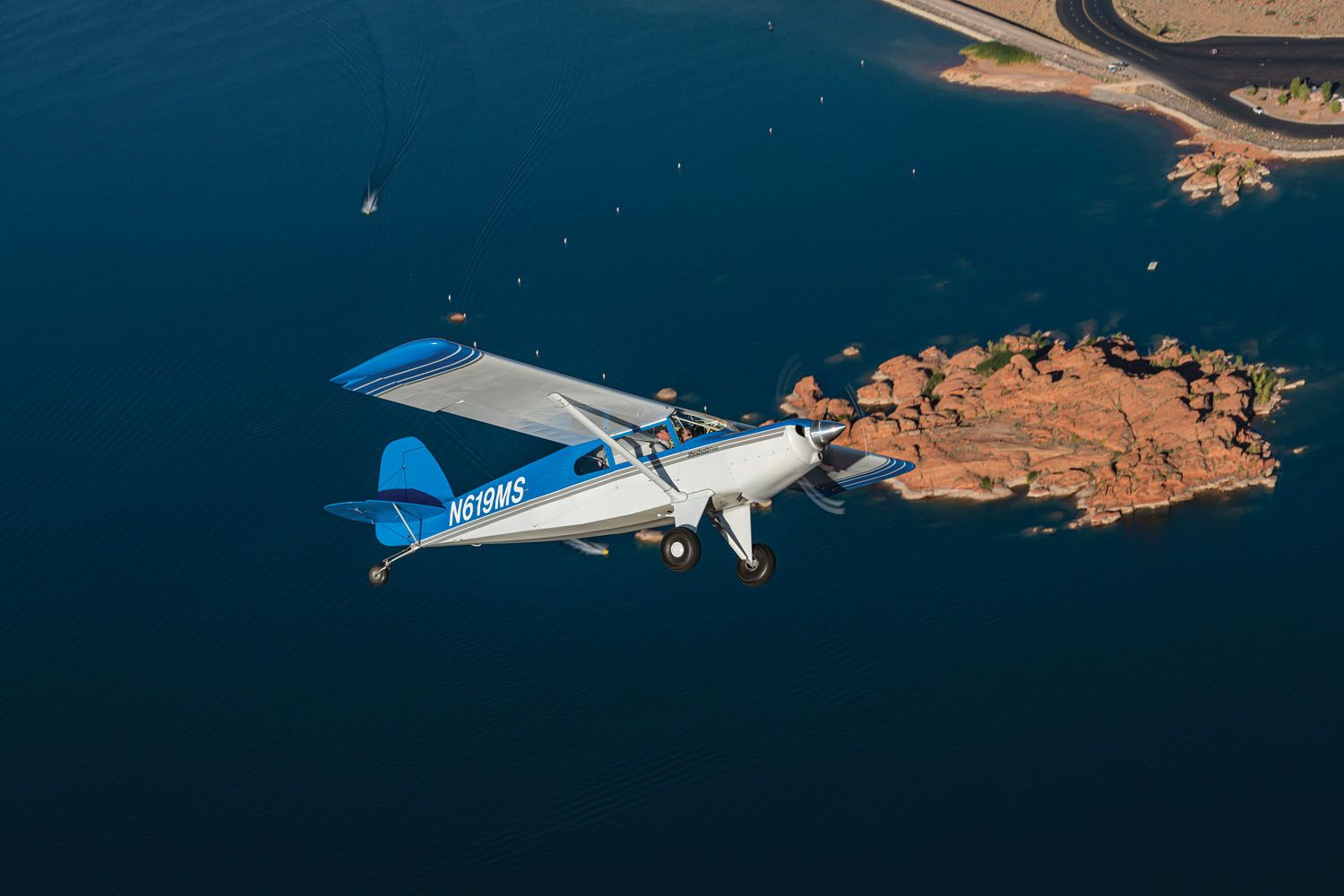
Bigger is Better
In the end, we like to think of the Bearhawk line of aircraft in the same way we think of utility pickup trucks. No, not the fancy leather seat, climate-controlled, concert-quality-audio pickup trucks…the kind that you get from the dealer as base models that you’re going to use on your ranch. Pick the size you want: quarter-, half-, full-, or two-ton, make sure that you can hose out the interior when it gets dirty, and expect them to do the job and keep doing it for years.
You can pick Bearhawks in size from the LSA up to the four- and now six-seater in the same way. Some might say that they aren’t very sexy, but “sexy” comes in all different varieties and depends on your perspective. We like an airplane that does what it is supposed to do, and does it very well. The big Bearhawk 5 promises just that. If I was looking for a big load hauler that can land anywhere reasonable, I’d be crazy not to take a very close look at the Bearhawk 5. It was purpose-designed for the job.
Photos: Richard VanderMeulen and Paul Dye.


